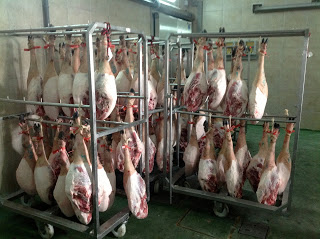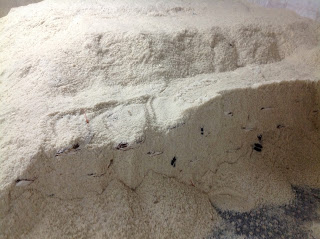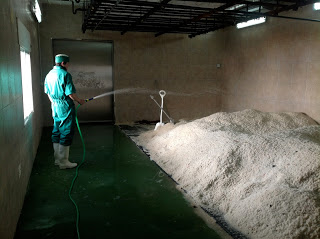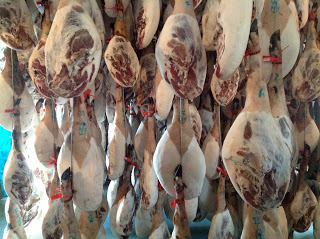On Friday of last week (8th February) I ran my Iberian ham tour. We are now at the time of the year when the free-range Iberian pigs have eaten sufficient acorns and are being sent off to the slaughterhouse to be turned into hams and all the other interesting products that the Iberian pig provides us with. In the first photo below you can see hams that are from pigs that were slaughtered the previous day.
The recently arrived hams then go into the salting rooms where they are put under mounds of coarse sea salt for a period of time that is calculated at one day per kilo of weight. The salting rooms are kept at around 3ºC and 90% humidity. In the following photo you can just see a little bit of some of the hams.
The salt itself has to be very humid before the hams are buried undet it. This helps the salt to penetrate into the ham. Below you can see someone watering the salt which is at this moment being used in the salting process of the hams in the first photo above.
When the hams are taken out from under the salt the excess salt on the surface is washed off and they are hung up in the post-salt rooms. In these rooms the temperature and humidlity can be controlled. The hams will be kept here for around 4 to 5 months with similar humidity and temperature conditions as the salting rooms for much of the time. Toward the end of this part of the process the humidity is gradually lowered and the temperature increased to levels that are similar to those in the natural drying rooms where the hams will go next. The hams in the photo below have just gone into one of the post-salt rooms.
You’ll have to wait around for more than 3 years before they are ready to eat, so be patient!




